What Spacecraft Will Enter Interstellar Space Next?
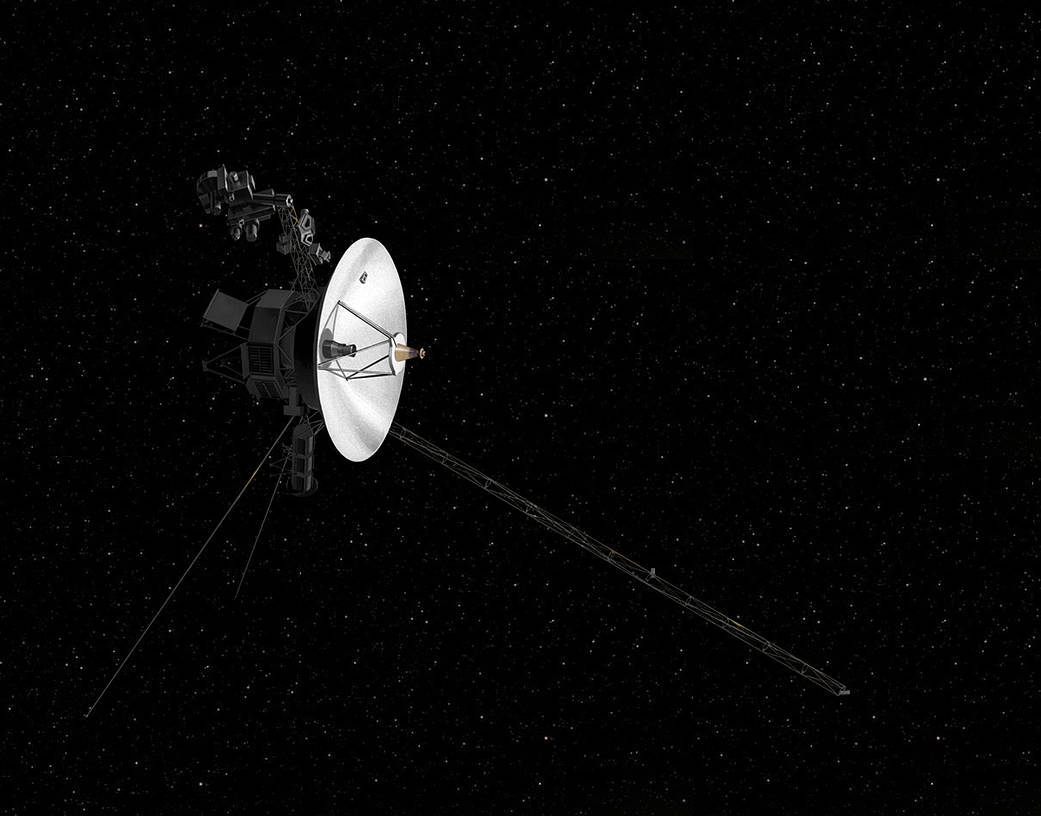
In December 2018, NASA's Voyager 2 spacecraft reached interstellar space, following the example of its sister, Voyager 1. Right now, only five spacecraft have been launched capable of making such a grand exit, including the Voyagers. The remaining three are Pioneers 10 and 11, and New Horizons. Which one will be the next to make a great escape?
This milestone — reaching interstellar space — can be considered leaving the solar system by a certain definition. Let's be clear about what that entails. In 1990, the New York Times reported that Pioneer was reported to leave the solar system when it flew past Neptune's orbit. That's not what Voyager 2's scientists used to make their determination, however. Instead, the more recent measurements consider the crossing of the sun's heliopause, the theoretical boundary to its heliosphere, to be the determining factor for entering interstellar space. The heliosphere is a bubble of charged particles created by and flowing past the sun. Scientists use it to mark where interstellar space begins.
But the heliosphere is tricky, and changes along with the sun's 22-year solar cycle, shrinking and growing with the solar wind, and stretching out behind the sun in the star's direction of travel. It's not something easily measured from Earth. NASA's Interstellar Boundary Explorer (IBEX) mission is working to remotely define the edges of the bubble. (The heliosphere is the bubble; the heliopause its edge.) [What's Next for NASA's Voyager 2 in Interstellar Space?]
The Voyager probes' observations indicate they have pierced this bubble. However, since researchers think the sun is also surrounded by the Oort Cloud, a region of icy bodies that is estimated to stretch from 1,000 to 100,000 astronomical units — far beyond the heliopause — the Voyager probes cannot be considered completely outside the solar system. (One astronomical unit, or AU, is the distance between the Earth and the sun — 93 million miles, or 150 million kilometers).
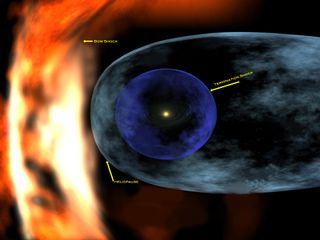
When Voyager 1 and 2 crossed the heliopause, their still-functioning particle instruments revealed the historic events. The heliosphere works as a shield, keeping out many of the higher-energy particles created by the cosmic rays produced by other stars. By tracking both the low-energy particles found inside the solar system and the high-energy particles from outside of it, the instruments could reveal a sudden surge of cosmic rays alerting scientists that the spacecraft had left the solar system.
So which spacecraft will be the next to cross into interstellar space?
Get the Space.com Newsletter
Breaking space news, the latest updates on rocket launches, skywatching events and more!
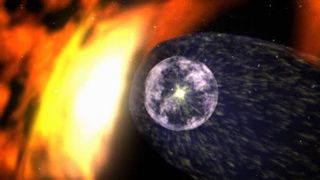
Filling in the details
The changing nature of the heliosphere makes it impossible to tell when Pioneer 10 and 11 will enter interstellar space. In fact, it's possible that one of them may have already.
According to NASA's e-book "Beyond Earth: A Chronicle of Deep Space Exploration," as of Nov. 5, 2017, Pioneer 10 was about 118.824 AUs from Earth, farther than any craft besides Voyager 1. However, while Pioneer 11 and the Voyager twins were all heading in the direction of the sun's apparent travel, Pioneer 10 is headed toward the trailing side. According to 2017 research, the tail of the heliosphere is about 220 AU from the sun. Since Pioneer 10 travels about 2.5 AU/year, it will take Pioneer until roughly 2057 — 40 years — to hit the changing boundary.
Pioneer 11 was estimated to be about 97.6 AUs from Earth as of Nov. 5, 2017, according to the same e-book. Unlike its twin, the spacecraft is traveling in about the same direction as the Voyagers. Voyager 2 crossed into interstellar medium at about 120 AUs. Since Pioneer 11 is traveling at 2.3 AU/year, it should cross into interstellar space in another decade, around 2027 — assuming the boundary doesn't change, which it probably will.
What about the newest spacecraft among the three, New Horizons? On Jan. 1, 2019, the spacecraft made its most recent flyby of a solar system object, and it was launched much later than the other four. During its flyby, New Horizons was 43 AU from the sun. Alan Stern, the mission's principal investigator, told Space.com that the spacecraft was traveling about 3.1 AU each year, or 31 AU in a decade. In another 20 years, the spacecraft has a decent chance of crossing into interstellar space. If New Horizons crossed at Voyager 2's same border (it won't, but just consider as a baseline), it would make the journey in just under 24 years, in 2043. But it's possible the ISM line will move inward, allowing a sooner crossing. [NASA's 10 Greatest Science Missions]
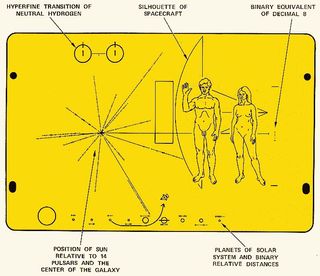
While we won't get a direct confirmation of crossing the heliopause with the Pioneer spacecraft, it's possible that New Horizons will still be functioning, and will provide a detailed study of interstellar space. The particle detectors that it is carrying are far more powerful than the ones found on Voyager, Stern said. In addition, New Horizons carries a dust detector that would provide insight into the region beyond the heliosphere.
"Putting a dust detector in the interstellar medium would be a very valuable experience," he said.
But it's going to be tight whether or not they will still be functioning. According to Stern, power is the limiting factor. New Horizons runs off of decaying plutonium dioxide. Right now, the spacecraft has enough power to work until the late 2030s, Stern said, and it is currently in good working order.
If the ever-changing heliosphere remains static — an unlikely event — Pioneer 11 will be the next to cross the heliopause in 2027, followed by New Horizons in 2043. Pioneer 10, the first of the five spacecraft to launch, will be the last to leave the heliosphere, in 2057. Again, this assumes the extremely unrealistic possibility of the heliopause remaining static for the next 40 years.
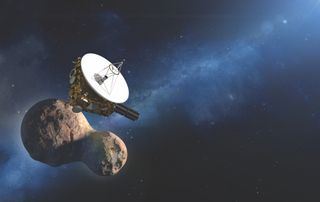
Making the pass
If you're interested in when the spacecraft will "pass" each other in the distance race, David Cranor has calculated the numbers in his blog, Nothing More Powerful. Cranor, who works in the space industry, has never worked on any of the five missions. To be clear, the spacecraft are all traveling different paths, so they won't pass each other as if they were traveling along a road. Instead, which one is the farthest out and closest to Earth will change over time.
"I've always been really interested in Voyager and the Pioneers, and I just got curious about when they would pass each other when some article mentioned that New Horizons was going faster than the Pioneers," Cranor told Space.com.
Working with limited data, he found that Voyager 1 passed Pioneer 11 between 1982 and 1983. He estimated that Voyager 2 overtook Pioneer 11 around March of 1988, though the changes in speed and direction suggest that it was probably sooner.
Because New Horizons' passage of Pioneer 10 and 11 are both so far in the future, Cranor warned that the numbers would have a significantly high error margin. However, using the speeds each craft was traveling as of December 2017, he calculated that New Horizons would pass Pioneer 11 in 2113 and wouldn't pass by Pioneer 10 until 2187.
Make sure you save the dates!
Follow Nola Taylor Redd on Twitter @NolaTRedd. Follow us on Twitter @Spacedotcom and on Facebook. Original article on Space.com.
Join our Space Forums to keep talking space on the latest missions, night sky and more! And if you have a news tip, correction or comment, let us know at: community@space.com.

Nola Taylor Tillman is a contributing writer for Space.com. She loves all things space and astronomy-related, and enjoys the opportunity to learn more. She has a Bachelor’s degree in English and Astrophysics from Agnes Scott college and served as an intern at Sky & Telescope magazine. In her free time, she homeschools her four children. Follow her on Twitter at @NolaTRedd










